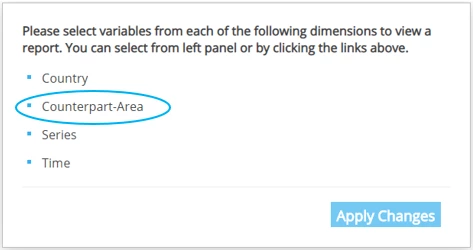For the first time in its almost half a century of existence, this year’s publication of the World Bank’s International Debt Statistics (IDS) added an additional dimension to the data – the creditor country. You can now see the public and publicly guaranteed sector debt of low- and middle-income countries owed to each creditor country, either official (multilateral or bilateral) or non-official (private creditor and bondholders), providing more detailed information on the borrower-lender relationship.
Previously, when querying IDS on DataBank or the World Bank API, you selected the borrower country, time, and series. After the publication of IDS 2021, you can also query the data by “counterpart area” as shown in the below screenshot from DataBank. The counterpart area is how you select the creditor, with the default or total being “World.” This is a substantial increase in the amount and type of data available to explore and analyze. I know what you’re thinking, where to begin?
To help get you started, we put together another step-by-step guide in both Python and R. The guide showcases the new counterpart area dimension, showing how it appears in the World Bank API and how to query it.
Getting IDS data by creditor
As always, please share your analysis with us at @worldbankdata and keep an eye on the debt-data GitHub for more step-by-step guides.



Join the Conversation